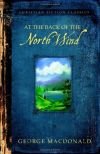
The Princess and the Goblin is a children's fantasy novel by George MacDonald. It was published in 1872 by Strahan & Co. The sequel to this book is The Princess and Curdie. Anne Thaxter Eaton writes in A Critical History of Children's Literature that The Princess and the Goblin and its sequel “quietly suggest in …

Phantastes: A Faerie Romance for Men is a fantasy novel written by George MacDonald, first published in London in 1858. It was later reprinted in paperback by Ballantine Books as the fourteenth volume of the Ballantine Adult Fantasy series in April 1970. The story centres on the character Anodos and takes its …

Lilith is a fantasy novel written by Scottish writer George MacDonald and first published in 1895. Its importance was recognized in its later revival in paperback by Ballantine Books as the fifth volume of the celebrated Ballantine Adult Fantasy series in September 1969. Lilith is considered among the darkest of …

At the Back of the North Wind is a children's book by George MacDonald. It was serialized in the children's magazine Good Words for the Young beginning in 1868 and was published in book form in 1871. It is a fantasy centered on a boy named Diamond and his adventures with the North Wind. Diamond travels together with …

The Light Princess is a Scottish fairy tale by George MacDonald. It was published in 1864. Drawing on inspiration from Sleeping Beauty, it tells the story of a princess afflicted by a constant weightlessness, unable to get her feet on the ground, both literally and metaphorically, until she finds a love that brings …

The Golden Key is a fairy tale written by George MacDonald. It was published in Dealings with the Fairies. It is particularly noted for the intensity of the suggestive imagery, which implies a spiritual meaning to the story without providing a transparent allegory for the events in it.

George MacDonald occupied a major position in the intellectual life of his Victorian contemporaries. This volume brings together all eleven of his shorter fairy stories as well as his essay "The Fantastic Imagination". The subjects are those of traditional fantasy: good and wicked fairies, children embarking on …

 English
English Español
Español Deutsch
Deutsch


